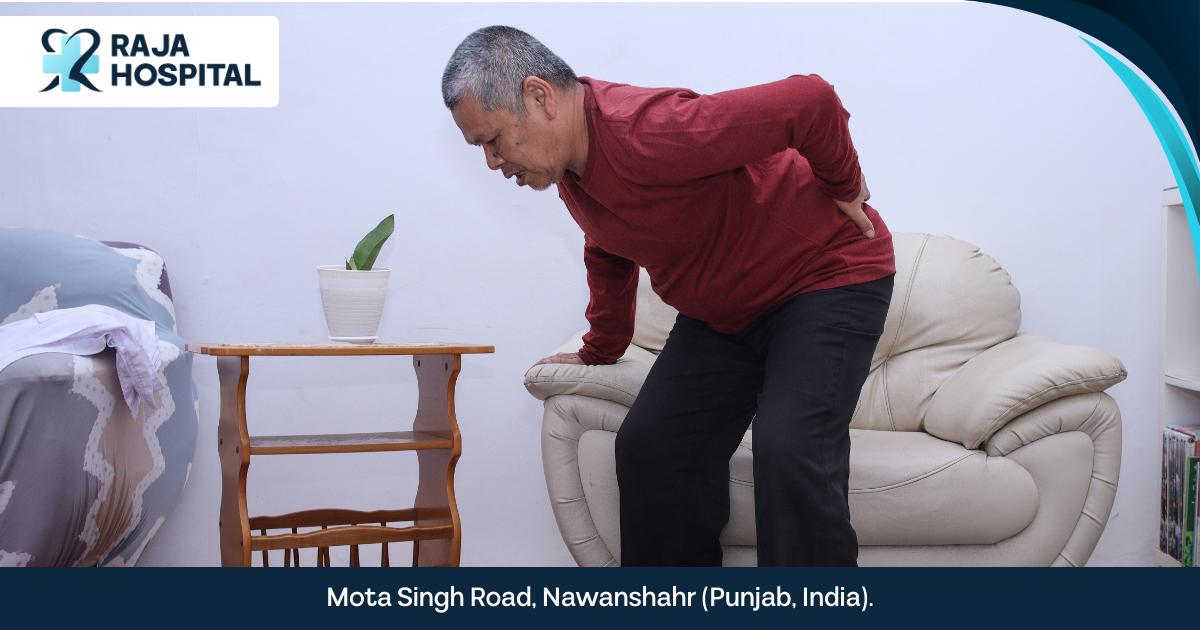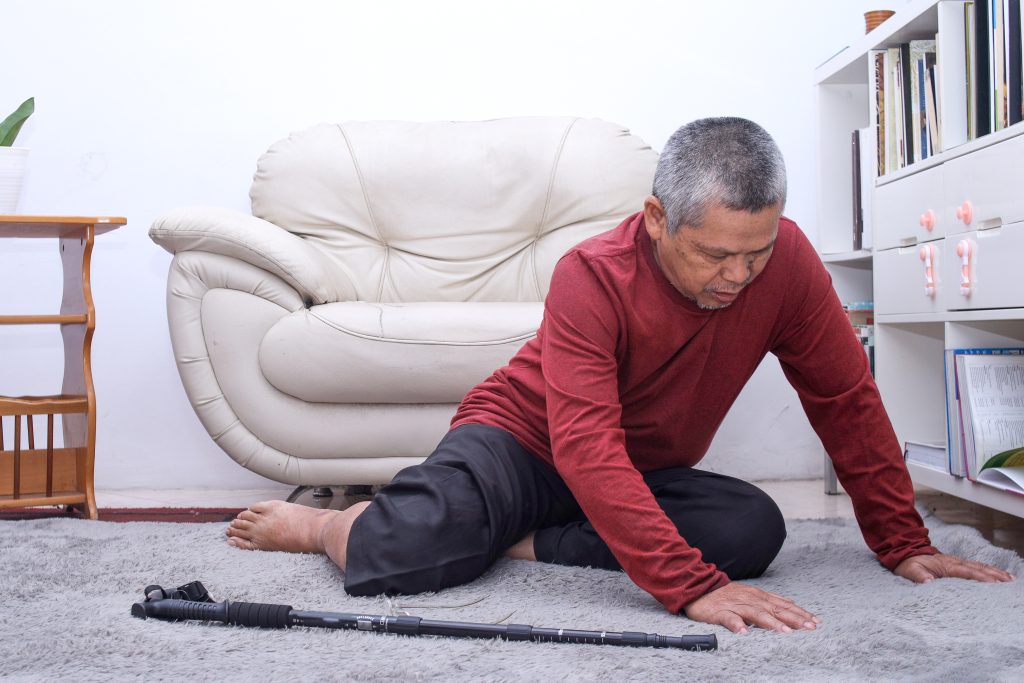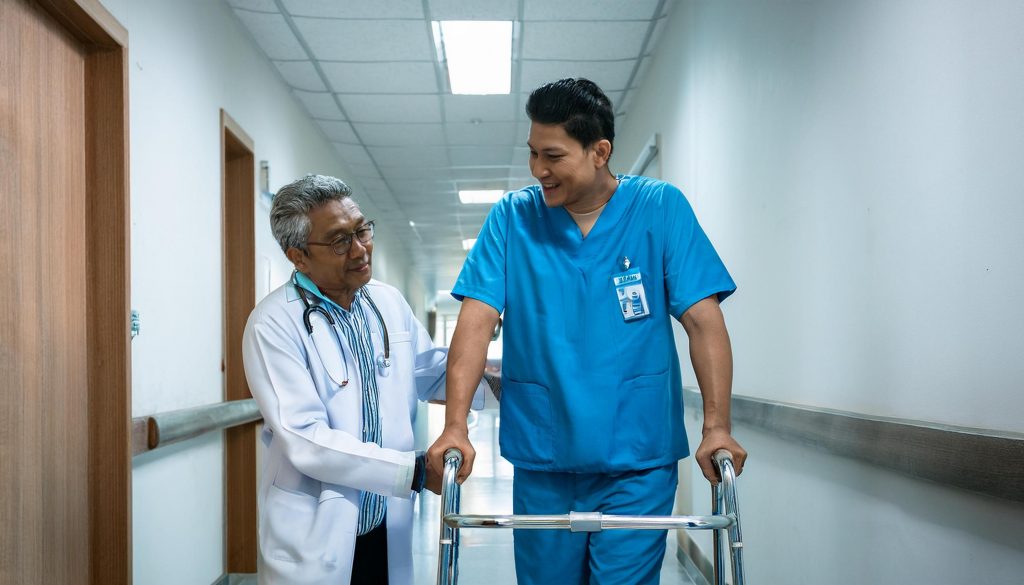3 Major Warning Signs of Hip Fractures

REVIEWED BY Dr. Sunil Duhan (MBBS, D-Ortho) ON 09th January 2025
You walk through your house simply one more ordinary day and suddenly misstep, bringing with it a sharp ache in your hip. It won’t let you try to get to a standing position. Changing your weight is already impossible; it feels as though something has gripped you. For athletes, older people, or just anyone coping with brittle bones, this is not a mere scenario: it’s the worst of nightmares.
Once there is a hip fracture, your entire world is upside down; all independence and quality of living seem to diminish. The best thing, however, is that no one has to let a hip fracture define or rule their life with good care, treatment, and prevention. This is an important guide to understanding hip fractures and taking you through healing and preventing them.
Struggling with same?
Book Your Appointment With Our Expert Doctors

What Are Hip Fractures?

The most serious of human injuries are hip fractures, which occur when the upper part of the thigh bone (femur) breaks near the hip joint. High-risk injury of older adults and those with weakened bones, it can also occur in any individual during a simple fall or, as in the extreme case, during a high-impact accident. The most immediate effects of hip fracture are mobility loss and prolonged pain.
Common Types of Hip Fractures
There are different types of hip fractures, each with its own challenges:
- Femoral Neck Fracture: A break just below the hip joint ball.
- Intertrochanteric Fracture: A break further down the femur between the hip joint and the main shaft of the bone.
- Subtrochanteric Fracture: A rare but severe fracture below the intertrochanteric region.
Symptoms and Warning Signs
Recognizing the signs of a hip fracture early is key to getting the right treatment.
- Pain in the hip or groin: Persistent and sharp pain in these areas.
- Inability to move or bear weight: Difficulty standing or walking.
- Visible deformities and bruising: Swelling or unnatural positioning of the leg.
What Are the Treatments for Hip Fractures?
Treating a hip fracture depends on its severity and the patient’s overall health. The two main approaches include surgical and non-surgical options.
Surgical Options
For severe fractures, surgery is often necessary to restore mobility and relieve pain.
- Hip Pinning (Internal Fixation): This involves using screws, plates, or rods to stabilize the broken bone.
- Partial Hip Replacement: Replacing the damaged part of the hip joint with an artificial component.
- Total Hip Replacement (Arthroplasty): Replacing the entire hip joint for more extensive damage or chronic arthritis.
Non-Surgical Options
For minor fractures or patients unable to undergo surgery, non-surgical methods can help manage the condition.
- Pain management through medications.
- Physical therapy to restore mobility and strength.
- Use of mobility aids like walkers and crutches.
Why Choose Raja Hospital for Hip Fracture Treatments?

Raja Hospital is one of the best places to go for excellent patient-centered care for hip fractures.
- Specialized: Highly experienced orthopedic surgeons who proficiently treat fractured hips.
- Most Advanced Technology: Use of advanced machines for accurate surgeries.
- Comprehensive Rehabilitation Programs: Specialized and personal recovery programs to each patient.
- Affordable Transparent Care for Top-Notch Treatment without any hidden costs.
Rehabilitation and Post-Treatment Care

Recovering from a hip fracture is not just done and over with treatment; it is a journey of reconquering mobility, strength, and confidence. Therefore, we at Raja Hospital believe in a holistic post-treatment recovery plan focusing on the healing of the body and therapeutic empowerment.
Personalized Physiotherapy Programs
Personalized workouts play a significant role in speeding recovery and returning to the normal range of motion. The following are some standard suggested exercises incorporated into rehabilitation:
- Ankle Pumps: Move your foot up and down gently to bring blood into it and cause swelling to decrease.
- Leg Slides (Heel Slides): Bring your heel up to your buttocks with the knee bent, then let it slide slowly back to the starting point.
- Activate these Quadriceps: Tighten your thigh muscles by pushing your knee down into the bed, holding it for about 5 seconds, and releasing.
- Hip Abductions: To strengthen the muscles of your hips, slide your leg out to the side while lying on your back and back to the center.
- Stand Marching: Holding onto a chair or onto a table, lift one knee at a time as if you were marching in place.
- Mini Squats: Stand in a supported stability position and flex the knees a little bit to work out the thigh while working on the stability.
Note: All exercises above are to be performed under the physiotherapist’s supervision for safety against strain or injury.
Guidance on Lifestyle Changes
Changing your daily habits in small increments contributes hugely towards the recovery process and the prevention of further fractures.
Bone-Strengthening Tips:
- Consume Food with Calcium: Enrich your diet with dairy products, leafy greens, almonds, and fortified cereals.
- Boost Vitamin D: Spend time outdoors, or take supplements as directed by a physician.
- Stay Hydrated: Drinking enough water will help maintain rock-solid bones and joints.
Mobility and Safety Tips:
- Mobility Assistance: Use a walker or crutches to give support while walking during recovery and decrease the chances of falls.
- Use Supportive Shoes: They help in providing the right balance and cushioning on the floor for a better stance.
- Practice Good Posture: Maintain your body in an upright and even position so that weight is dispersed evenly and the hips will not endure as much strain.
Preventive Measures for the Future:
- Strength Training: Uses light weights or resistance to gradually build muscle and bone strength over time.
- Flexibility Exercises: The rigidity can be resolved with stretching to the individual.
- Fall-Proof Your Home: Keep floors clear, rugs secured, and grab bars established in high-risk areas such as bathrooms.
- Regular Bone Density Tests: To note the possible chances of osteoporosis, have early monitoring of bone health.
Rehabilitation is about progress, not perfection. You can look forward to a full and confident recovery with consistent effort and expert care at Raja Hospital.
Daily Prevention Tips for Hip Fractures

Prevention is always better than cure, especially for hip fractures. Incorporate these habits into your daily life to reduce risks:
- Consume products such as calcium and vitamin D foods that are important for the maintenance of healthy bones.
- If advised to do so, take the supplements for bone density by consulting with a physician.
- Strength training and flexibility exercises are extremely effective in developing balance.
- Install fall-proof measures in the home environment of elderly family members.
- Avoid high-risk activities when having busted bones.
- Go for a Bone Density Test on a regular basis to follow your bone health.
Struggling with same?
Book Your Appointment With Our Expert Doctors

FAQs About Hip Fractures
Conclusion
Hip fracture is a serious setback and does not have to deprive you of independence or quality of life. Knowing the causes, symptoms, and treatments empowers you to take charge of your own recovery.
At Raja Hospital, we believe patients should walk to their feet with personalized treatments and advanced technology. Whether it is prevention, surgery, or rehabilitation, we are with you every step of the way.
With your hip fracture, do not let yourself go and I will rebuild together. Contact Raja Hospital today and witness top-tier guidance and support.
